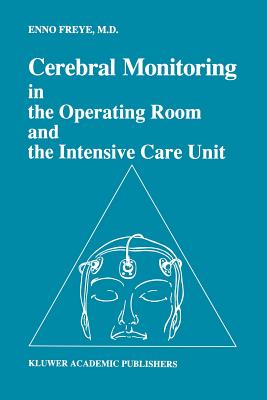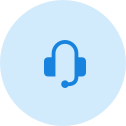图书简介
In spite of today’s increasing body of knowledge in regard to central nervous func tion and/or the mode of action of centrally active compounds, little is done to monitor those patients which are at risk of cerebral lesions either in the OR or in the ICU. Due to the inconsistency of reports regarding the application and the benefits computerized EEG and/or evoked potential monitoring will bring to the clinician, physicians still are reluctant to get involved with a technique, which they think, will have little or no effect on the outcome of a patients well being. However, due to the development in computer technology, data acquisition and comprehension, it now is possible to monitor such a viable organ as the Central Nervous System (CNS) on a routine base without being a specialist in neurology or electroencephalography. Thus, the book is intended to guide the clinician to use BEG and evoked potential monitoring in a day to day situation, without going too deep into technical details. As an improvement of cerebral care is needed, various representative cases underline the interpretation of EEG power spectra and evoked potential changes in regard to the underlying clinical situation. It is hoped that this book will serve as a guide to anyone who considers cerebral monitoring a necessity in today’s patient care. This may be the anesthesiologist, the intensive care therapist, the nurse anesthetist as well as the medical personnel in the lCU setting.
1. Introduction.- 1.1 Rationale for the use of cerebral monitoring in the OR and the ICU.- 1.2 Why monitor the brain.- 1.3 The neurological approach to EEG interpretation.- 2. The principle of EEG recording using computerized power spectral analysis.- 2.1 Difference with conventional EEG recording.- 2.2 Electrode placement.- 2.3 Technical requirements to obtain a reliable EEG signal (amplifiers, filters).- 2.4 The recording procedure.- 2.5 Display techniques of the EEG.- 2.6 Artifact rejection during processed EEG measurement.- 2.7 Signal conduction and conversion.- 3. Set-up of monitoring the EEG: The electrode montage.- 4. Anesthesia and the EEG.- 4.1 Rationale for the use of the EEG in anesthesia.- 4.2 Inhalational agents and their effect on the EEG (N2O, halothane, enflurane, isoflurane).- 4.3 Intravenous agents and their effect on the EEG (barbiturates, etomidate, ketamine, opioids, benzodiazepines, propofol, CO2).- 5. The EEG and cerebral ischemia.- 5.1 Differentiation between ischemia and anesthetic-induced EEG changes.- 5.2 Cerebral monitoring during hypothermia and extracorporeal circulation (ECC).- 5.3 EEG monitoring during carotid endarterectomy.- 6. Cerebral monitoring in the intensive care unit.- 6.1 Introduction: Representative case reports.- 6.2 EEG power spectra to differentiate between severe head trauma and drug overdose.- 6.3 Symptoms of irreversible cessation of functions of the brain including the brain stem.- 6.4 Avoiding false interpretation of EEG signal.- 6.5 EEG power spectra during sleep.- 7. Trouble shooting.- 8. Systems currently available for processed EEG recording.- 8.1 Introduction.- 8.2 Description of units used for EEG power spectral analysis in the OR and the ICU.- 9. Sensor Evoked Potentials (SEPs).- 9.1 What they are and what they offer.- 9.2 Rationale for the use of EPs in the OR and the ICU.- 9.3 The classification of EPs.- 10. The principle of Somatosensory Evoked Potential monitoring.- 10.1 Electrode types.- 10.2 Procedure for locating the exact stimulus site.- 10.3 The stimulus necessary for SEP recording.- 10.4 Recording electrodes.- 10.5 Procedure for head measurements to determine electrode location.- 10.6 Accessory for electrode placement and removal.- 10.7 Connection of electrodes with the preamplifier.- 10.8 Trouble shooting to eliminate high impedance and electrical noise.- 10.9 The differential amplifier for EEG and EP measurements.- 11. Optimising signal to-noise ratio.- 11.1 Introduction.- 11.2 Procedure to locate the optimal stimulus site.- 11.3 Alternating recording and stimulus sites.- 12. Evaluating the response of the evoked potential.- 12.1 Median nerve evoked potential.- 12.2 The posterior tibial nerve evoked potential.- 12.3 Criteria for abnormalities of both median and posterior tibial evoked potential.- 13. The effect of drugs on the evoked potential.- 13.1 Application of SEP monitoring in the clinical setting.- 13.2 Representative examples of SEP traces at different clinical situations.- 13.3 Postoperative use of SEPs.- 14. Use of evoked potentials in the ICU.- 14.1 Introduction.- 14.2 SEPs in the diagnosis of lesions in the plexus of the upper extremities and in cervical root lesions.- 14.3 Use of SEP monitoring in head trauma, vascular disease, and brain death.- 14.4 Pitfalls and pointers for SEP measurement in the OR and the ICU.- 15. Auditory Evoked Potentials (AEPs) and Brainstem Auditory Evoked Response (BAER or BAEP).- 15.1 Auditory Evoked Potentials.- 15.2 Clinical applications of BAER.- 16. Visual Evoked Potentials (VEPs).- Summary on the application of intraoperative EP monitoring.- 17. Complications that arise during EP monitoring.- 18. Systems of use for EP measurements in the OR and the ICU.- 19. New scopes in cerebral monitoring by topographic mapping of EEG-power spectra and EP waves.- 20. Appendix.- 20.1 Care of electrodes.- 20.2 Summary of the clini
Trade Policy 买家须知
- 关于产品:
- ● 正版保障:本网站隶属于中国国际图书贸易集团公司,确保所有图书都是100%正版。
- ● 环保纸张:进口图书大多使用的都是环保轻型张,颜色偏黄,重量比较轻。
- ● 毛边版:即书翻页的地方,故意做成了参差不齐的样子,一般为精装版,更具收藏价值。
关于退换货:- 由于预订产品的特殊性,采购订单正式发订后,买方不得无故取消全部或部分产品的订购。
- 由于进口图书的特殊性,发生以下情况的,请直接拒收货物,由快递返回:
- ● 外包装破损/发错货/少发货/图书外观破损/图书配件不全(例如:光盘等)
并请在工作日通过电话400-008-1110联系我们。
- 签收后,如发生以下情况,请在签收后的5个工作日内联系客服办理退换货:
- ● 缺页/错页/错印/脱线
关于发货时间:- 一般情况下:
- ●【现货】 下单后48小时内由北京(库房)发出快递。
- ●【预订】【预售】下单后国外发货,到货时间预计5-8周左右,店铺默认中通快递,如需顺丰快递邮费到付。
- ● 需要开具发票的客户,发货时间可能在上述基础上再延后1-2个工作日(紧急发票需求,请联系010-68433105/3213);
- ● 如遇其他特殊原因,对发货时间有影响的,我们会第一时间在网站公告,敬请留意。
关于到货时间:- 由于进口图书入境入库后,都是委托第三方快递发货,所以我们只能保证在规定时间内发出,但无法为您保证确切的到货时间。
- ● 主要城市一般2-4天
- ● 偏远地区一般4-7天
关于接听咨询电话的时间:- 010-68433105/3213正常接听咨询电话的时间为:周一至周五上午8:30~下午5:00,周六、日及法定节假日休息,将无法接听来电,敬请谅解。
- 其它时间您也可以通过邮件联系我们:customer@readgo.cn,工作日会优先处理。
关于快递:- ● 已付款订单:主要由中通、宅急送负责派送,订单进度查询请拨打010-68433105/3213。
本书暂无推荐
本书暂无推荐
















